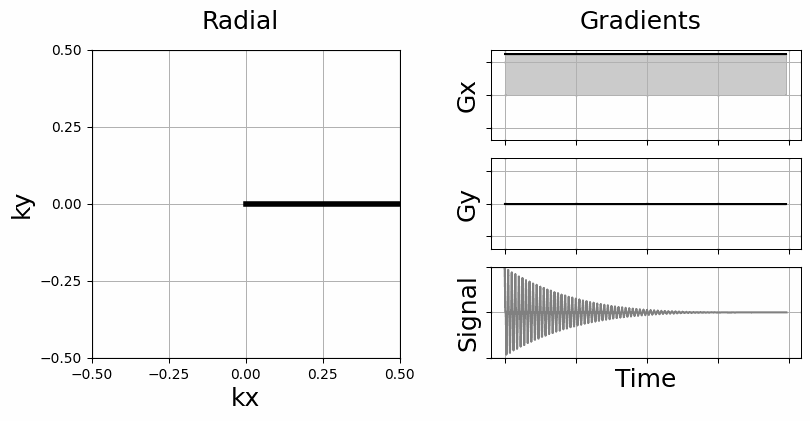display_2D_trajectory#
- mrinufft.trajectories.display.display_2D_trajectory(trajectory: ndarray[tuple[int, ...], dtype[_ScalarType_co]], figsize: float = 5, one_shot: bool | int = False, subfigure: Figure | Axes | None = None, show_constraints: bool = False, acq: Acquisition | None = None, constraints_order: float | Literal['fro'] | None = None, scale_fov: bool = False) Axes[source]#
Display 2D trajectories.
- Parameters:
trajectory (NDArray) – Trajectory to display.
figsize (float, optional) – Size of the figure.
one_shot (bool or int, optional) – State if a specific shot should be highlighted in bold black. If True, highlight the middle shot. If int, highlight the shot at that index. The default is False.
subfigure (plt.Figure, plt.SubFigure or plt.Axes, optional) – The figure where the trajectory should be displayed. The default is None.
show_constraints (bool, optional) – Display the points where the gradients and slew rates are above the gmax and smax limits, respectively. The default is False.
acq (Acquisition, optional) – Acquisition configuration to use. If None, the default acquisition is used.
constraint_order (int, str, optional) – Norm order defining how the constraints are checked, typically 2 or np.inf, following the numpy.linalg.norm conventions on parameter ord. The default is None.
scale_fov (bool, optional) – If True the ticks are scaled to represent the k-space in m^-1 If False (default) the ticks are left in the normalized k-space [-0.5, 0.5]
- Returns:
ax – Axes of the figure.
- Return type:
plt.Axes



